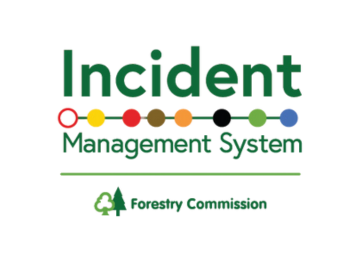Who should attend?
For middle managers who manage incidents or events and who are responsible in forests districts, natural reserves, farm estates, large visitor centres etc.
This can be for a wide range hazard types and events including, but not exclusive too; Plant Health, Animal Health, Wildfires, Missing Persons, Pollution, Storms/High Wind damage (including windblow), Festivals and Concerts.
What will be covered?
1. Demonstrate personal resilience and self-discipline to meet the demands of incident and emergency management
2. Implement dynamic or analytical risk assessments to identify the likelihood and severity of incidents that could occur in their area of responsibility
3. Implement preparedness and prevention measures to minimise or remove the risk of possible incidents
4. Use the key principles of incident management to implement contingency plans for the response (and recovery) to incidents, emergencies or events in your area of responsibility
5. Ensure the correct balance and tempo between undertaking an Incident Management Team meeting, Tasking actions and achieving outcomes
6. Participate as an effective member of the Incident Management Team, either planning for meetings, within meetings, or making or supporting actions occur through tasking
7. Promote personal and organisational preparedness in advance to ensure operational readiness using training and exercises
8. Obtain and analyse available information and intelligence to inform decision making in accordance with organisational requirements
9. Make critical decisions based on the best available information and the key principles of incident management in accordance with organisational requirements and policy
10. Initiate and manage an appropriate and effective response at the early stage of an incident, emergency or event
11. Establish and communicate the aim, objectives and strategy for dealing with the incident or emergency in accordance with organisational requirements and create an incident action plan
12. Establish and implement the appropriate level of management team for the incident or emergency, planning for predicted escalation and including all relevant functions in the management team structure
13. Confirm that options, decisions, rationale and actions are fully logged and recorded in accordance with organisational requirements
14. Establish effective communications with all those involved in the response to the incident or emergency
15. Work effectively in co-operation with partner organisations at a multi-agency level in accordance with the Joint Emergency Services Interoperability Principles (JESIP)
16. Confirm safety procedures are in place to establish a safe system of work for all personnel attending the incident, emergency or events at all times
17. Obtain and provide technical and professional advice from suitable sources, such as subject matter advisors, to inform decision making in accordance with organisational requirements
18. Review the needs of the incident or emergency and the scale of required resources and confirm their availability
19. Continually monitor the incident management structure and the functions in use to ensure it changes to reflect the developing incident, emergency and event as necessary
20. Establish information sharing with partner agencies and confirm that relevant organisations have sufficient, accurate and timely information to enable effective co-ordination of response activities
21. Begin planning for the recovery phase of the incident or emergency at the earliest opportunity by creating medium and long-term priorities in accordance with organisational requirements



